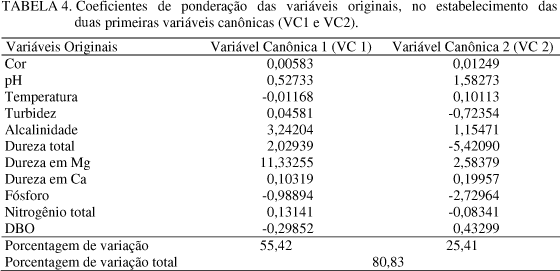With the objective of verify the remainders influence of ciliary vegetation and of the human action on the water quality, four springs were studied, with two springs on presence of remaining natural vegetation and two springs with agricultural activities predominance. These springs are part of Córrego Rico watershed, being located in the municipal districts of Taquaritinga and Guariba, São Paulo State, Brazil, in two classes of soil: argisoil and latosoil, respectively. Points of collection of water were defined on the spring and along the water flow (among 0 to 50 m of the spring), in two periods (rainy and dry). The following variables were analyzed: color, pH, temperature, turbidity, alkalinity, total hardness, magnesium hardness, calcium hardness, phosphorus, nitrogen and DBO. It was concluded that, in a general way, a separation for springs and also for periods was observed, confirming that the sampling periods as well as the characteristics and different uses of the soil influence the water quality of the watersheds. Color, turbidity, alkalinity, and total nitrogen are the variables that presented the better relative importance in the canonic variables.
small watersheds; water resources; land uses






